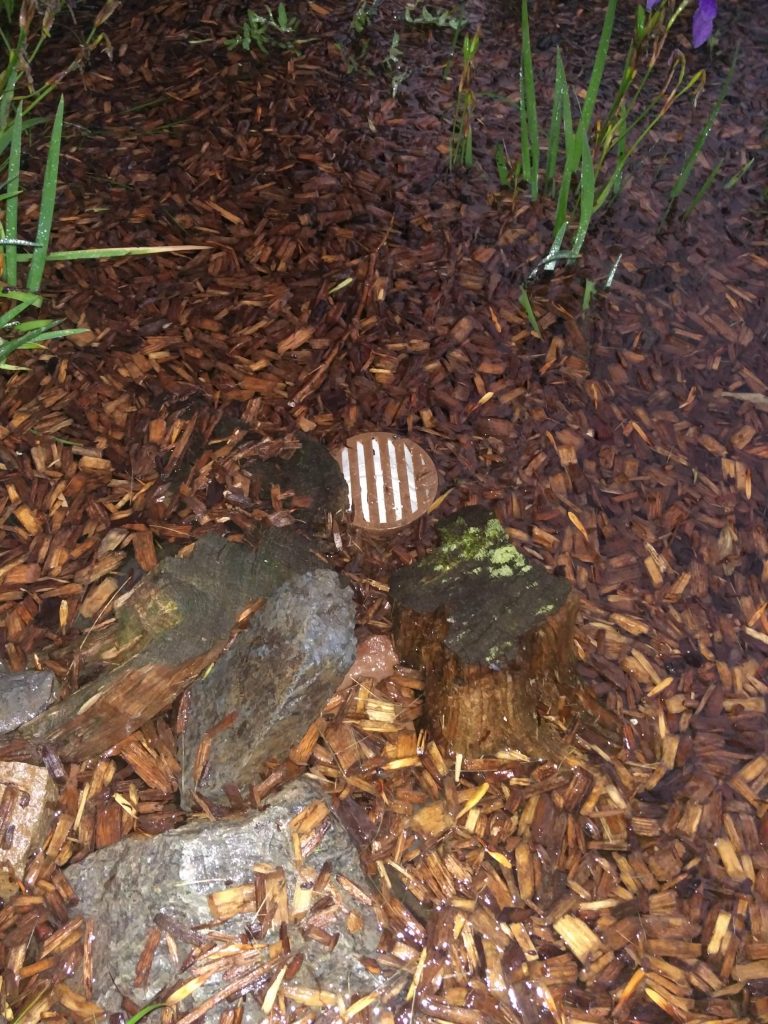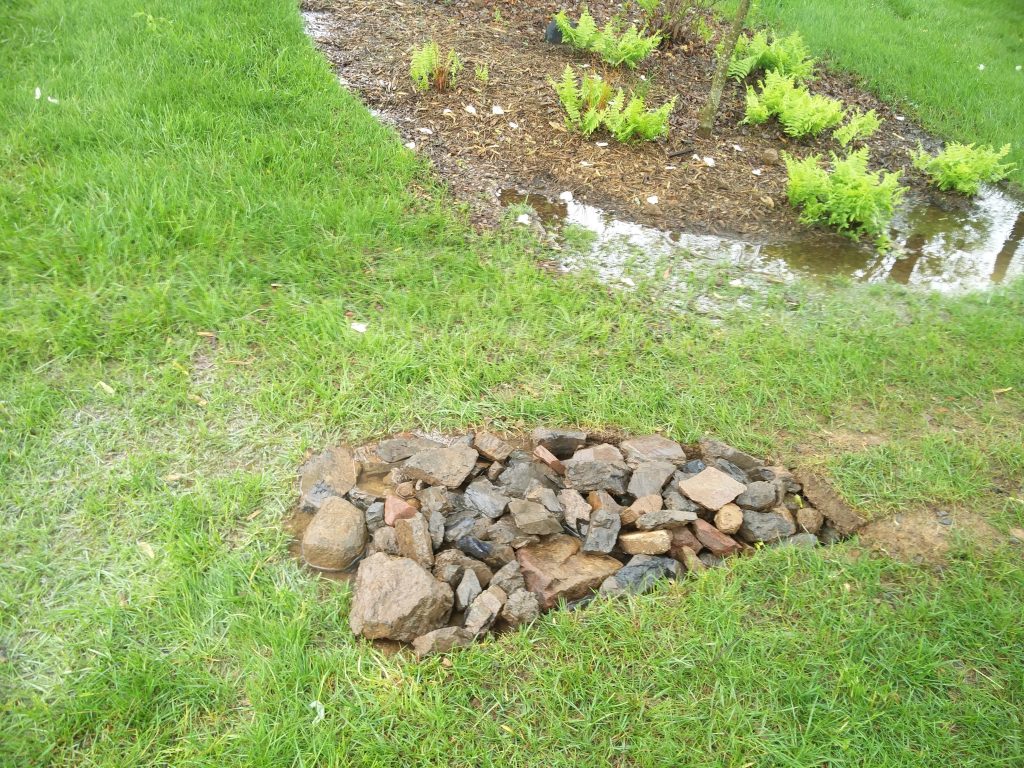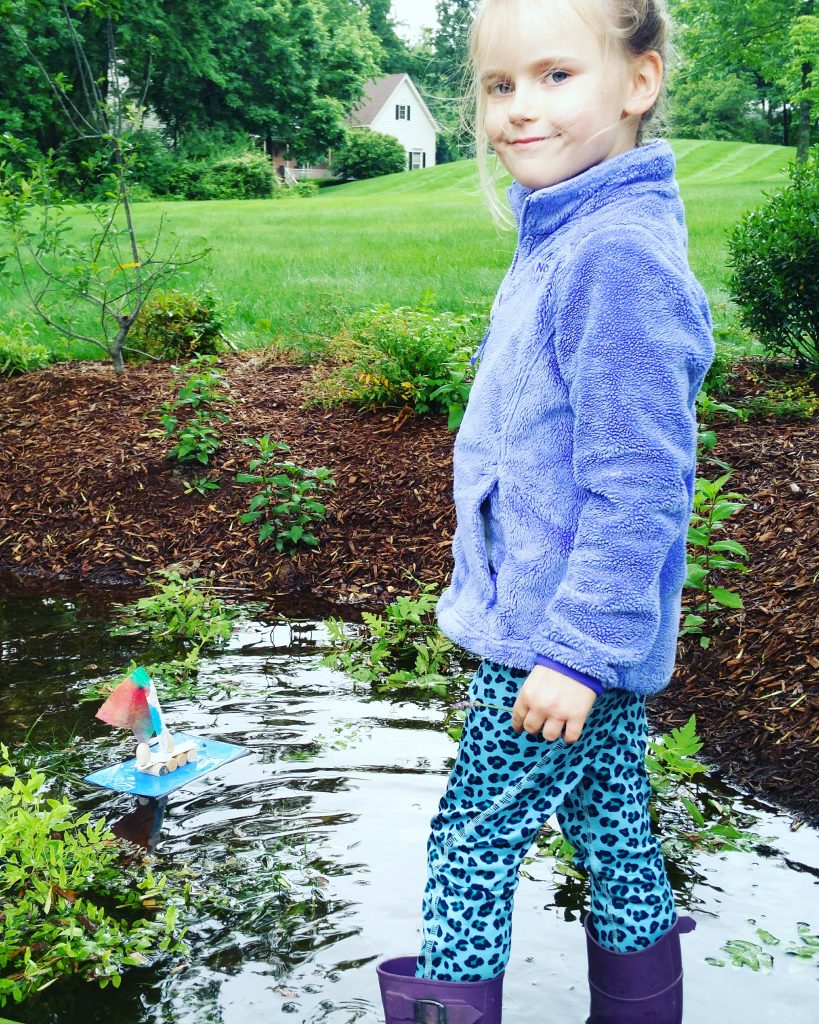If You Build it….
The Rains Will Come
Water has great power. It can be healing, soothing, calming, scenic and beautiful. But, water can also have extreme power, and in some cases, lead to extreme damage. Stormwater runoff has become a major topic of concern especially in recent years as climate change seems to produce stronger precipitation events, and more of them. The common everyday front lawn does not do a very good job of handling storms. The roots of the grass are too shallow and the water cannot percolate through the ground. Instead, the stormwater just pools upwards and in the worst cases, will even flood the roadway.
Rain gardens are quickly gaining notoriety for their ability to handle moisture while simultaneously providing plants and shrubs with the soil, shade, moisture and light that they require to survive. There are several types of rain gardens and there is no perfect size or location for all of them. Some rain gardens can be quite large, others can be just a small raised planter at the downspout of a gutter. They can be in a shady spot or they can be in full sun. But what all rain gardens have in common is that they slow the flow of water during times of excessive rainfall. Additionally, rain gardens (in order to be successful at what they do) must include plantings that are able to sustain times of excessive drought just as much as they are able to sustain excess amounts of rainfall. Therefore, once you decide on your rain garden, some careful thought has to go into choosing the plants and shrubs that are able to handle the extremes. Foremost, the plants you choose should be perennial plants (grasses and ferns too) that are well suited to this task thanks to their porous root structure and high growth rate. Our rain garden also includes some shrubs and full grown trees as well.
Our home sits at the bottom of a small cul de sac. And when it rains, we bear the brunt of water coming down the lane. What wasn’t being caught in the storm drains, was running down our driveway. And in really really heavy downpours, our basement was also getting wet. Small pools of water would trickle in the front of our house.
Growing tired of the constant “wet spot” in our front yard and looking for ways to mitigate our wet basement, we installed a rain garden in the early spring of 2017. It completely transformed the look of our front yard. It is like its own little ecosystem. It happens to be one of the first things I see coming down our driveway on my way home, and it has become one of my favorite features of our home, and rightly so. I could spend hours just weeding around and taking a look at all of the plants that come and go with the season. Not to mention the birds in spring and the butterflies in the summer. Here are some additional before and after photos.
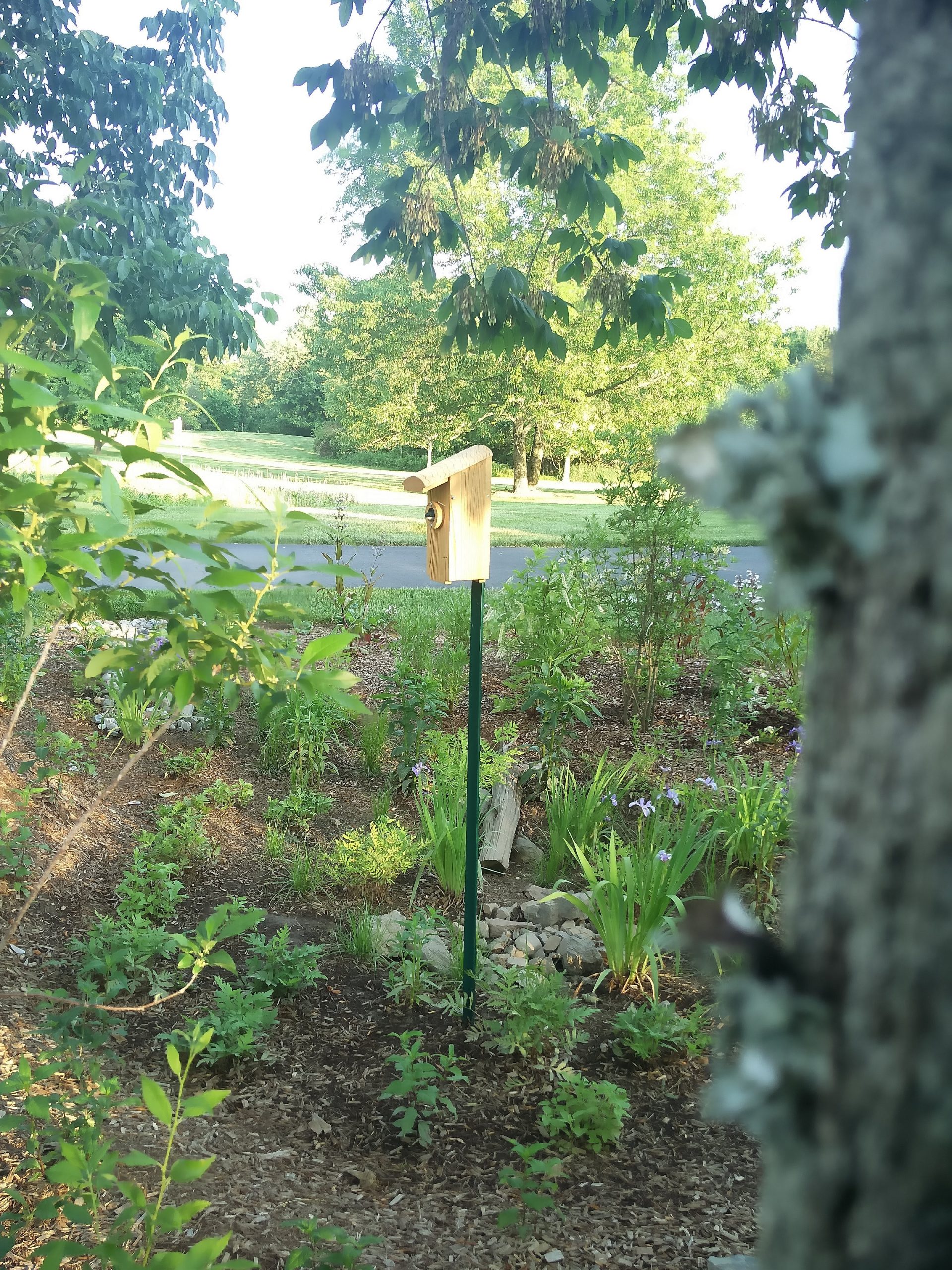
The Evolution Begins…
It came as little doubt that this location in our yard was begging to become a rain garden. There was always pooled water in our yard, as evidenced by a splashing toddler in the below video taken in late July of 2016:
The below images show the area before it became a rain garden. The sodden lawn taken in July 2016, and what it looks like when the rain garden is in full bloom, in July 2019. Three years and our yard has taken on a whole new habitat and literally blossomed!
Note the placement of the three trees in relatively the same location as reference as well as the driveway and eastern cedar tree in background.

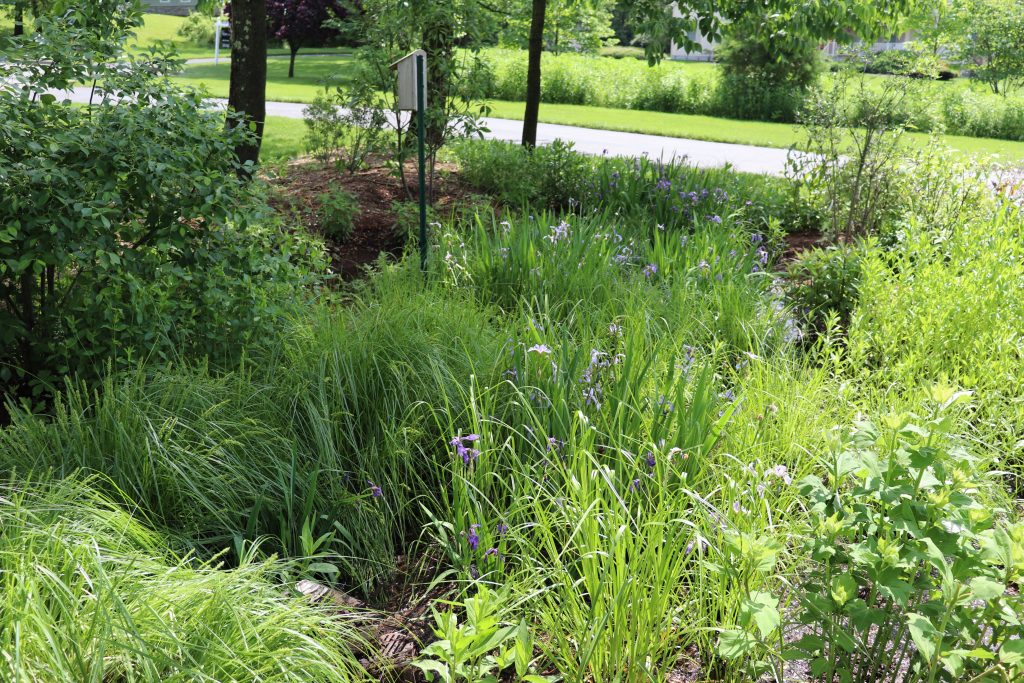
David Hughes of Weatherwood Design out of Doylestown, PA drew up the plans for our “puddle garden” as our daughter calls it, from the book of the same name by Jared Rosenbaum. It has become a source of great enjoyment in our family and every year to date hosts its own little family of new birds. We have been known to float a boat in the rain garden, splash in puddles and have a water gun fight too!
One of the first things that needed to be done was to check the grades around the proposed site. The last thing we wanted was for the water to get backed up in the wrong place. That would certainly defeat the purpose! In doing so you should also consider the approximate size of your rain garden. Our rain garden measures approximately 735 square feet in total, with the pool area measuring at about 250 square feet. Pool area is as it sounds, the area that “pools” with water in intense rainstorms. The night after our rain garden was first dug out, it poured, and in the picture below, you can get a feel for the pool area size. The quality of the picture is poor because it was taken from our second story window. Able to withstand heavy rain, yet the water only remains in the pool area for about half a day to a day at the longest.

After that, the plantings can go in. Here is a picture after the initial plantings were installed, on May 4, 2017, you can still see the tracks in the background from the downpipe installation with the replaced grass over top.

Just a few days later, the rain garden was put to the test, below is picture from May 4th taken facing the opposite direction from the picture above:

Out of curiosity, I checked the rainfall amounts for the month of May in 2017 in New Jersey. And I was not surprised to see that 6.51 in of rain fell that month! Our rain garden was surely put to the test. And it behaved miraculously well. We had to nail down the tree stumps that were placed in the pool area as a wildlife attraction perch, but other than that, on its first full month it was certainly tested. Our basement also remained dry. The rain garden caught a bit of a break in June, with only 3.32 inches of rain falling. But then it got another good soaking in July, with 6.29 inches of rain! Further, if you check the records, you will find that 2018 was an incredible year in the record books for rain. A total of 64.76 inches fell that year. That was the highest recorded amount on record since records were being kept in 1895.
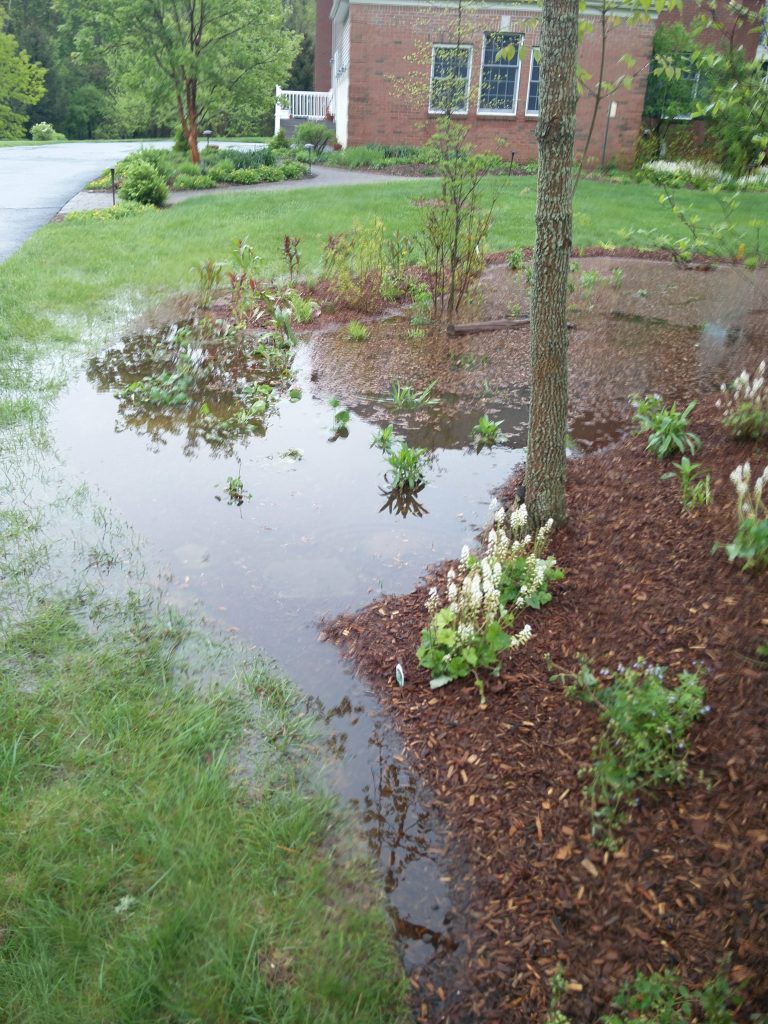
The amount of soaking rain we received was no cause for alarm. If anything, it was a boon. In just two months, the growth of our little puddle gardens’ plants was just amazing! The picture below was taken on June 19, 2017.

And example of some of the plants in our garden include:
Blue Flag Iris (Iris versacolor)
False dragonhead, or obedient plant (Physostegia virginiana)
Mistflower (Eupatorium coelestinum)
Jacob’s ladder (Polemonium reptans)
Wild Geranium (Geranium maculatum)
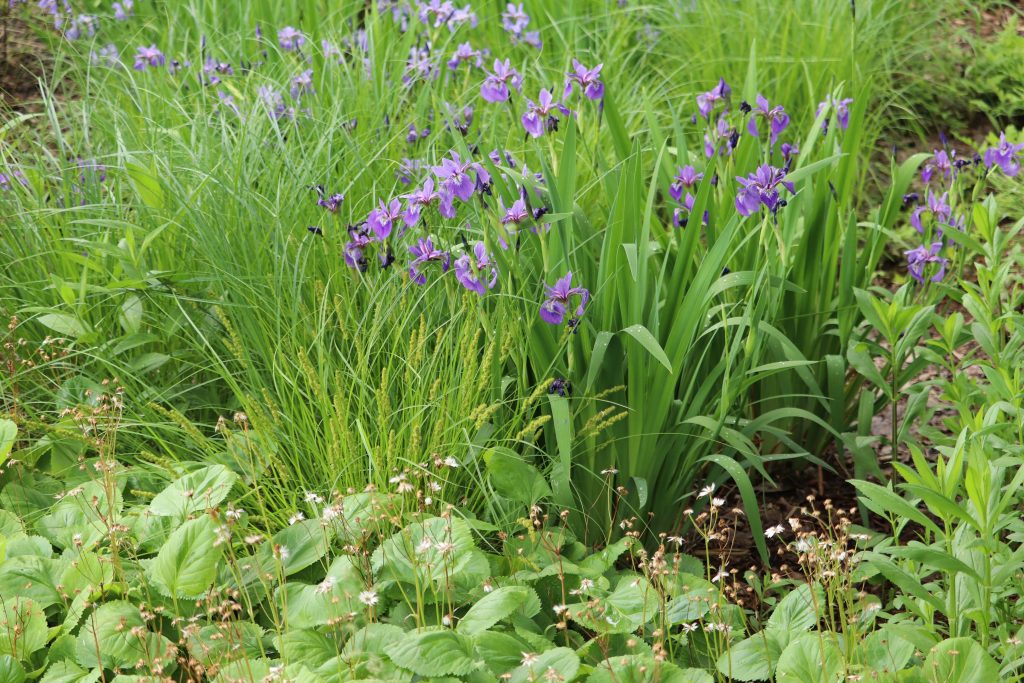

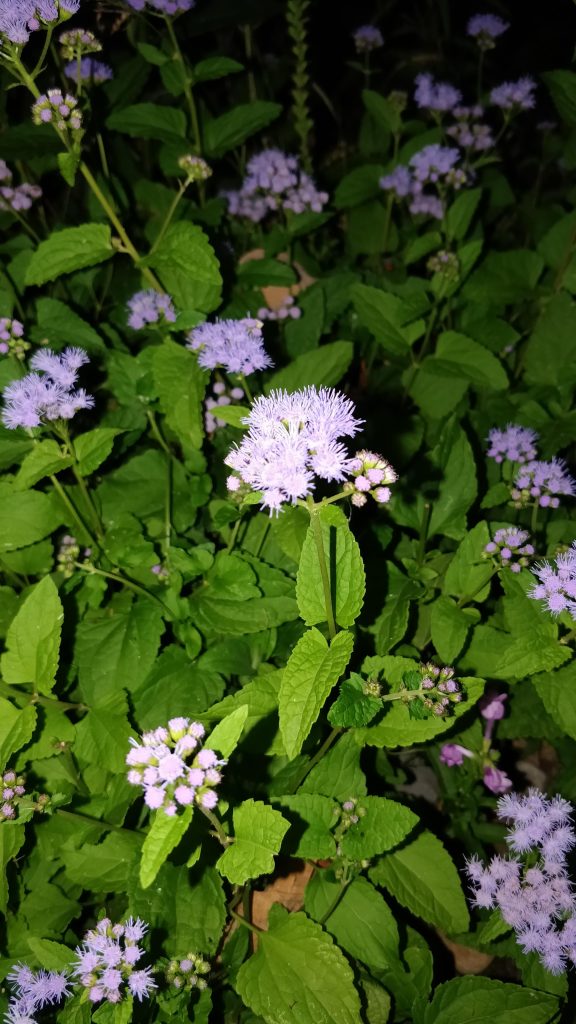
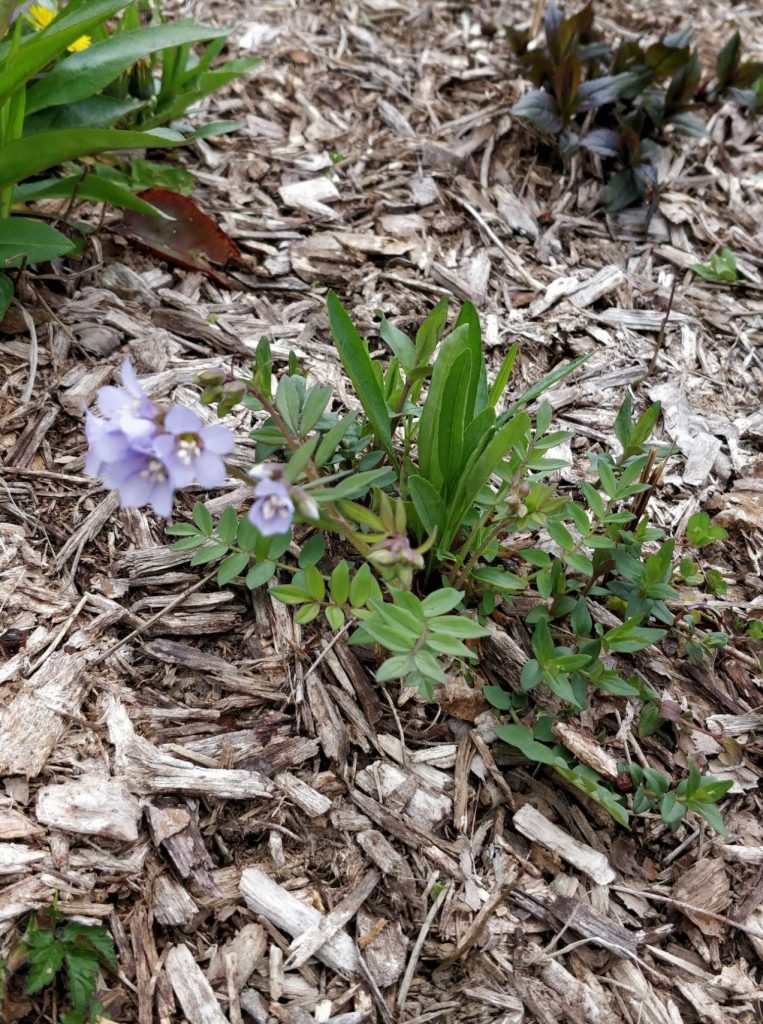
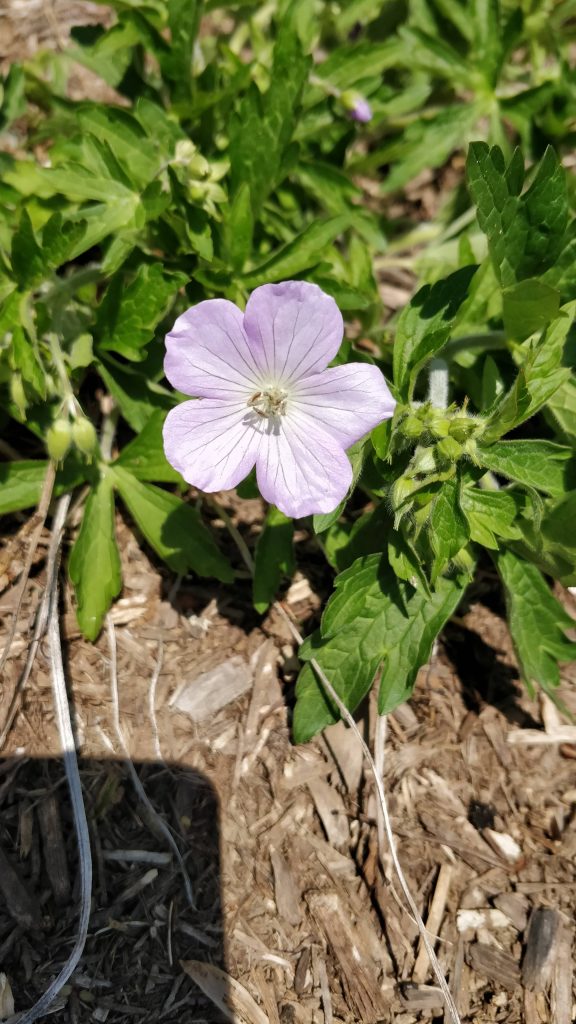
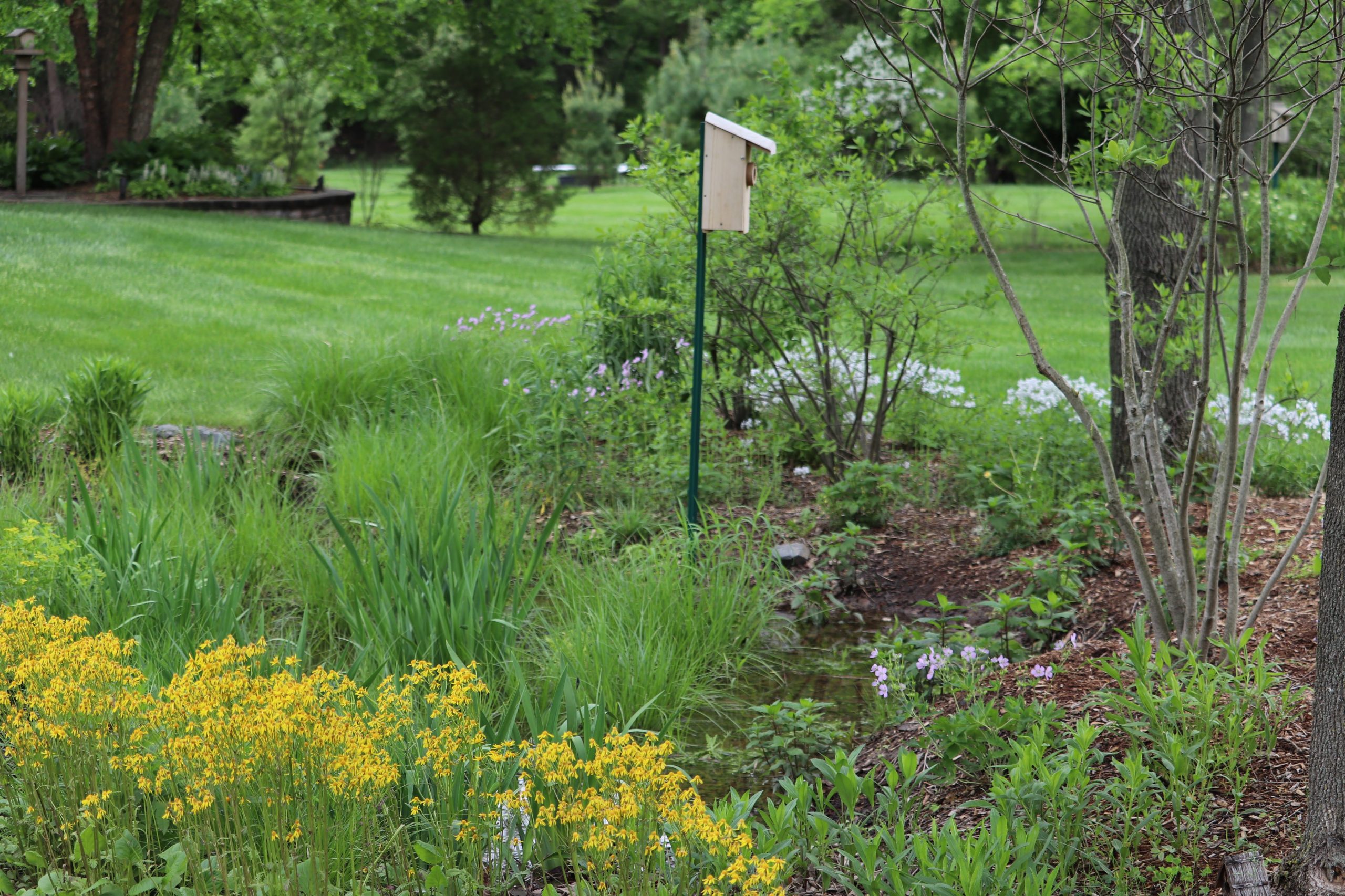
In the picture above with the yellow flowers in the foreground you get an idea of the pool area, and the different types of plants that can tolerate the saturation. And then, compare this picture to what the rain garden looks like in late summer, it evolves, changes, and new flowers come in to replace the ones that have died back. Here, the golden ragwort (Senecio aureus) (yellow blooms of late spring) are replaced by the light purple blooms of the mistflower below. It is difficult to see that this is the same location in the garden because the three signature trees are hard to make out. But the nest box remains in the middle of the pool area, it’s just a little hard to see! To read a little more information on golden ragwort click on the link.
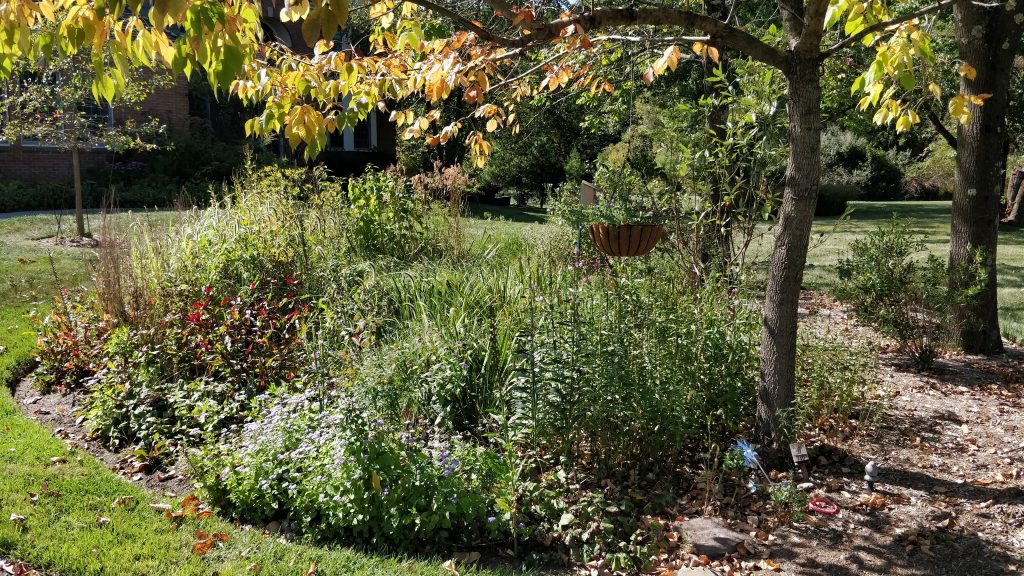
How Do I Maintain a Rain Garden?
Every rain garden is different. Really no two are exactly the same. One of the most important things we do throughout the year is make sure that the drain next to the rock weir (pictured below) is free of debris or leaves or mulch. If it is, then the water will take much longer to percolate and drain. This overflow drain is connected to a pipe that leads about 100 feet away from the rain garden. And other than the occasional weeding and pruning an basic fall and spring clean up, we really don’t do much to the rain garden other than enjoy it. Again, every rain garden is different. Different soil, different plants, and different locations all make up for an evolving garden, and if the research is done correctly, and the proper slope/grade is installed while keeping the pool area the proper size, very little maintenance is required.
